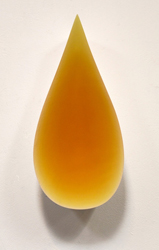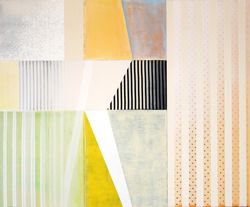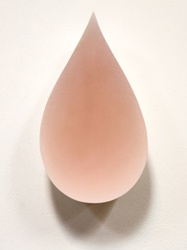Ned Evans
New Paintings and Resin Reliefs
Images
| Biography
October 19 - November 23, 2013
Reception: October 19, 2013 4-6PM
Q&A with Hunter Drohojowska-Philp
Saturday, November 2, 10AM
RSVP by Thursday, October 31
The multi-layered compositions of tilted bars and stripes in colorfully orchestrated cubistic spaces that have characterized Ned Evans’ recent paintings have been distilled in his latest work into more minimal equations. As a result of this reductive approach, many of the new paintings at Craig Krull Gallery dissect the playing field into opposing areas of pattern and vacant space. Other times, it appears as if two, three or four paintings were tightly abutted into harmonious geometric collages. This compartmentalization demonstrates the power of dichotomy, whereby sensations are intensified if juxtaposed with their opposites or complements. As Evans suggests, the new work is also influenced by the Gee’s Bend quilt-makers, whose irregular and improvisational quilts have been compared to Modernist Abstraction. In fact, Evans often begins his compositions with large geometric swaths of cotton ticking, whose muted blue or gray stripes serve as a foundation from which to build upon.
In an adjoining space, Evans will debut his brilliantly colored resin wall reliefs. A native of Southern California, Evans is a life-long surfer and, like fellow artist Peter Alexander, he associates time spent in the water with his interest in the fluid and translucent properties of poured resin sculpture. In this new resin work, Evans seeks an even more animated quality, forming these 3-inch deep reliefs into the shapes of tear-drops, pools and puddles that seem to ooze and drip. Poured into the bright white polyurethane foam that forms the core of surfboards, the aqua, mango and raspberry colored resins subtly gradate from lighter tones at the shallow edges to darker tones at the deep center in much the same way as a swimming pool. Over the years, Evans has always been interested in shaped canvases and other shaped painting surfaces. These resin works, along with his new paintings, demonstrate his continued desire to delineate edges and play with the relationship of form to negative space.


